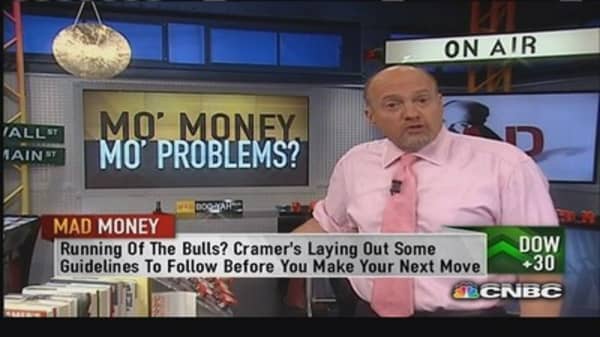Here are five common mistakes that rookie investors make:
• Chasing the herd: Everyone knows the phrase, "buy low, sell high." But frequently, the opposite holds true, as popular investments get widespread media coverage, and investors wind up buying in at a very high price after the run is mostly past. Take Tesla, the red-hot electric vehicle company that held a 2010 IPO at $17 a share and now trades for about $135 a share. In just two trading days on July 15 and 16, it lost more than 15 percent—still leaving early investors with a hefty profit, but doing a lot of damage to those who were late to the stock. Be aware that momentum frequently moves both ways, and don't make investing decisions based only on what's popular.
• Not letting go, part one: The other side of the "buy low, sell high" that investors forget is the idea of exiting at the top. Often folks will fall in love with an investment that has done well, convinced that if it made 5 percent this year, it will make 50 percent more next year. Unfortunately, that kind of track record isn't common, and it's safer to trim back a bit before the stock loses its luster. If you sell half your shares, for instance, you lock in some profits while still participating in a little bit more upside, should the run continue.
• Not letting go, part two: Of course, bad investments can be equally hard to sell. Nobody likes to lock in a loss, and it's easy to convince yourself that the deep declines are short-lived and that a rebound is right around the corner. So remember this: If you invest in a stock that plummets, and you need to make 20 percent to get back to even, there's no rule that requires you to make that 20 percent in this specific stock instead of an alternative investment. Why not move your money? It's often easier to find a new pick with a bright future rather than depend on a battered company to somehow turn things around.
• Getting greedy: If you have big confidence in an investment, putting a lot of money behind it often sounds like a good idea. But it's awfully risky to put all your eggs in one or two baskets. Always err on the side of diversification, and never allow a single position to represent more than 10 percent of your portfolio —even if you think it's a "sure thing." While a big bet pays off quickly when you're right, it can cause serious damage when you're wrong. Better to play it safe and stay diversified, even if it means not going "all in" on your favorite stock.
• Timing the market: Countless reports show that timing the market—that is, trying to sit out the bad times and jump in headfirst when things turn—does as much harm as good. When you sit out the market, you often fail to participate in rallies; when you go all-in, you often pick the wrong time to buy. Then there are the extra trading fees and short-term capital gains taxes, not to mention the added stress. Unless you have a crystal ball, stick to long-term investing instead of jumping in and out.
(Read more: The rich are saving cash at a record pace)
—Jeff Reeves is the editor of InvestorPlace.com and the author of The Frugal Investor's Guide to Finding Great Stocks.




